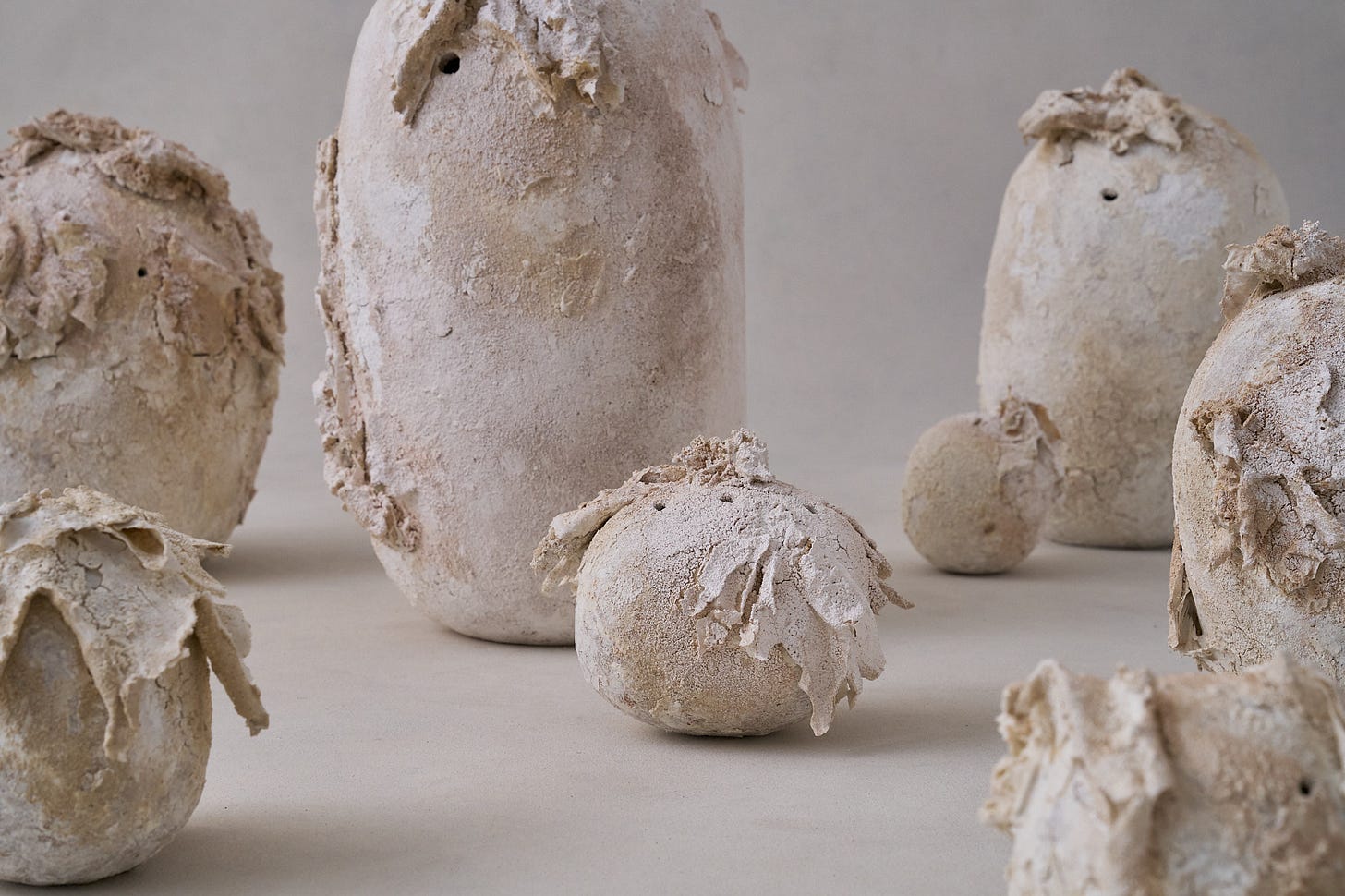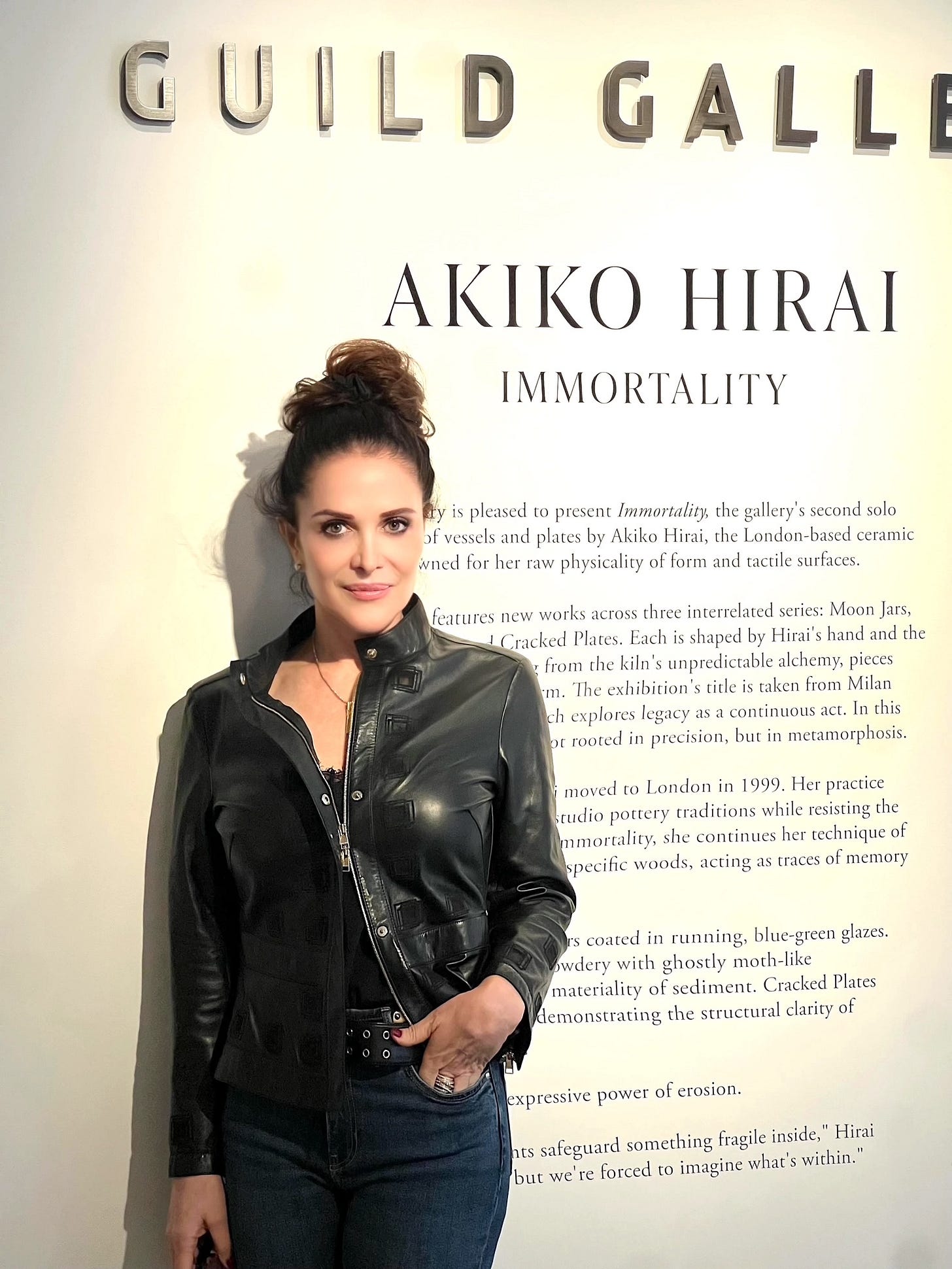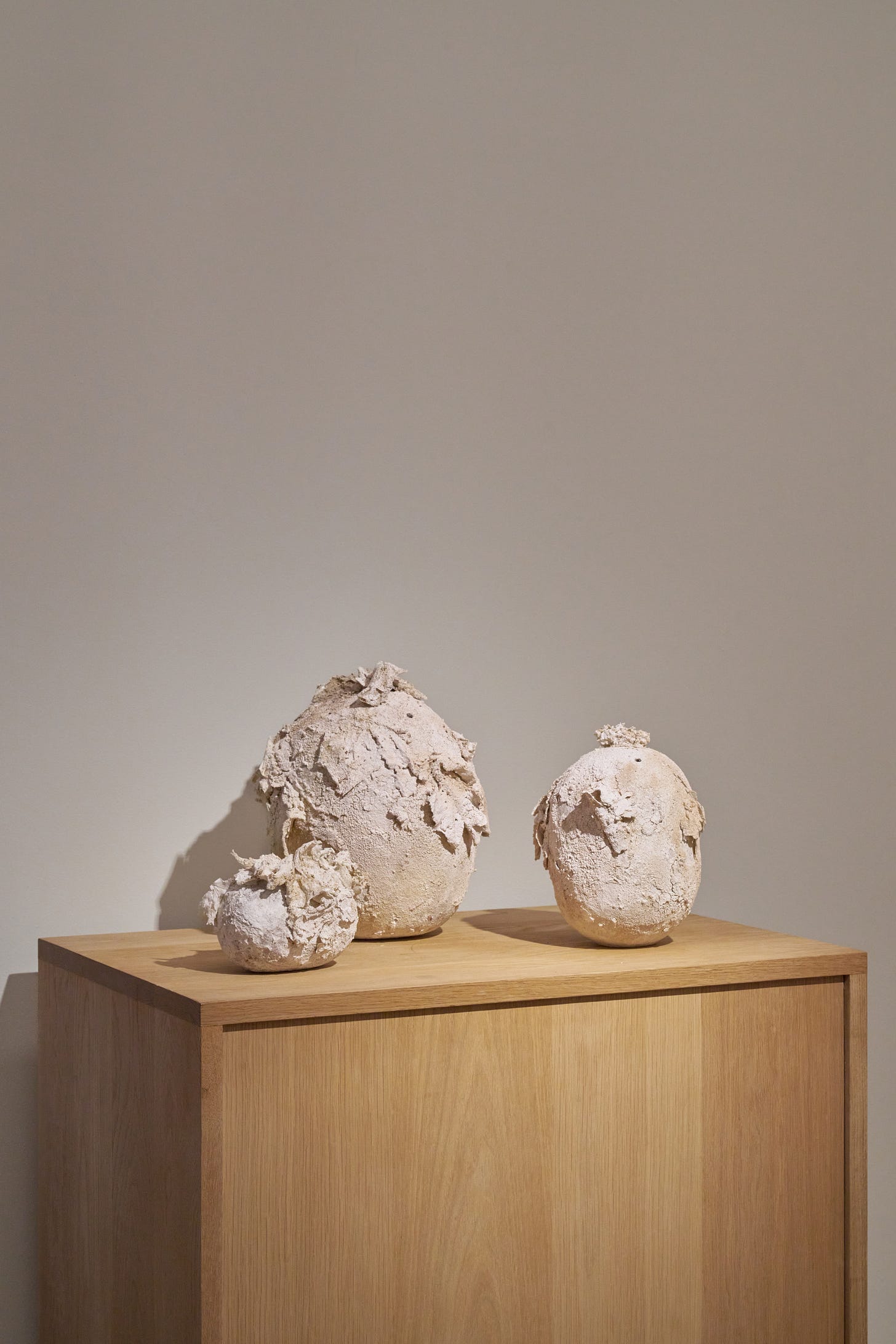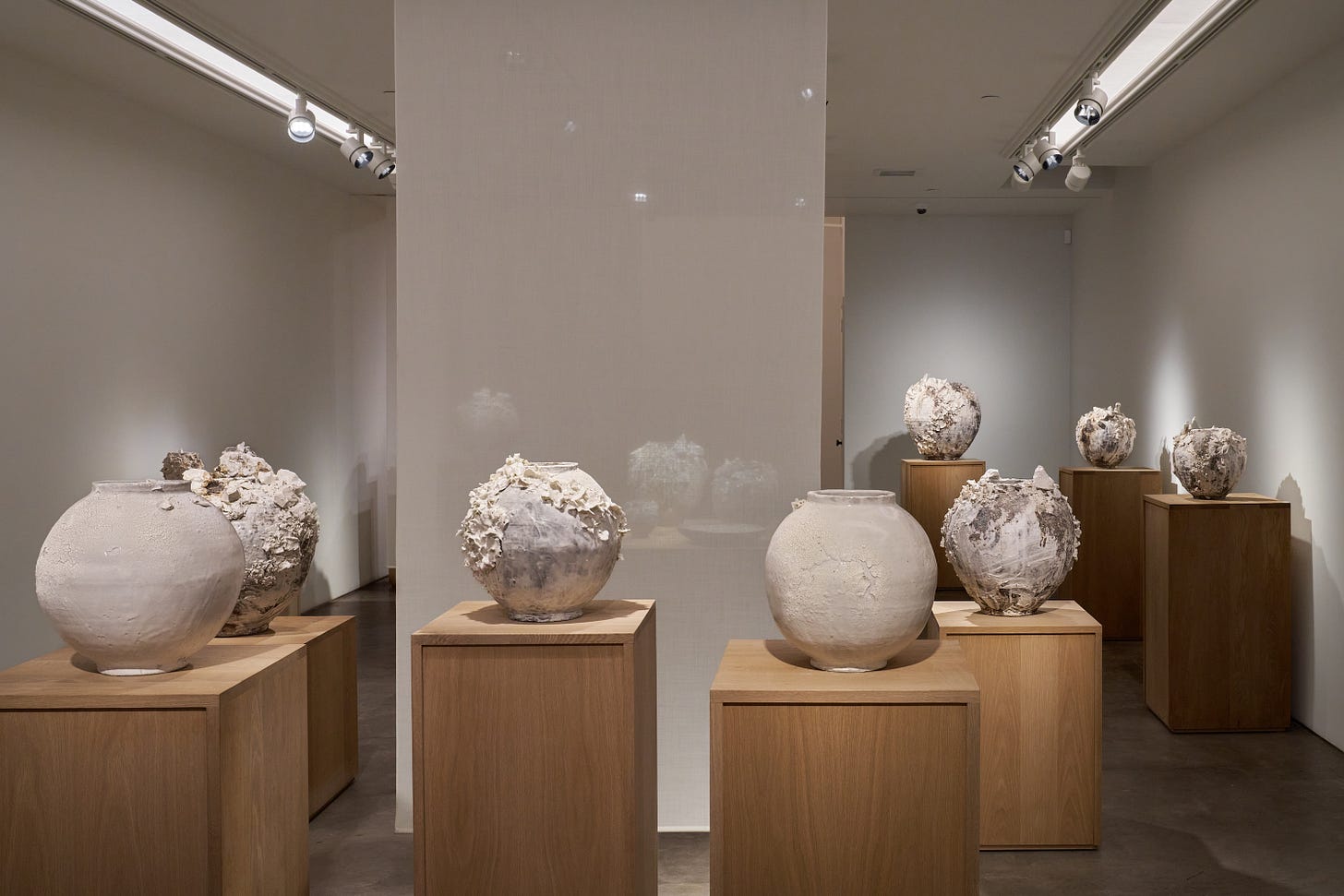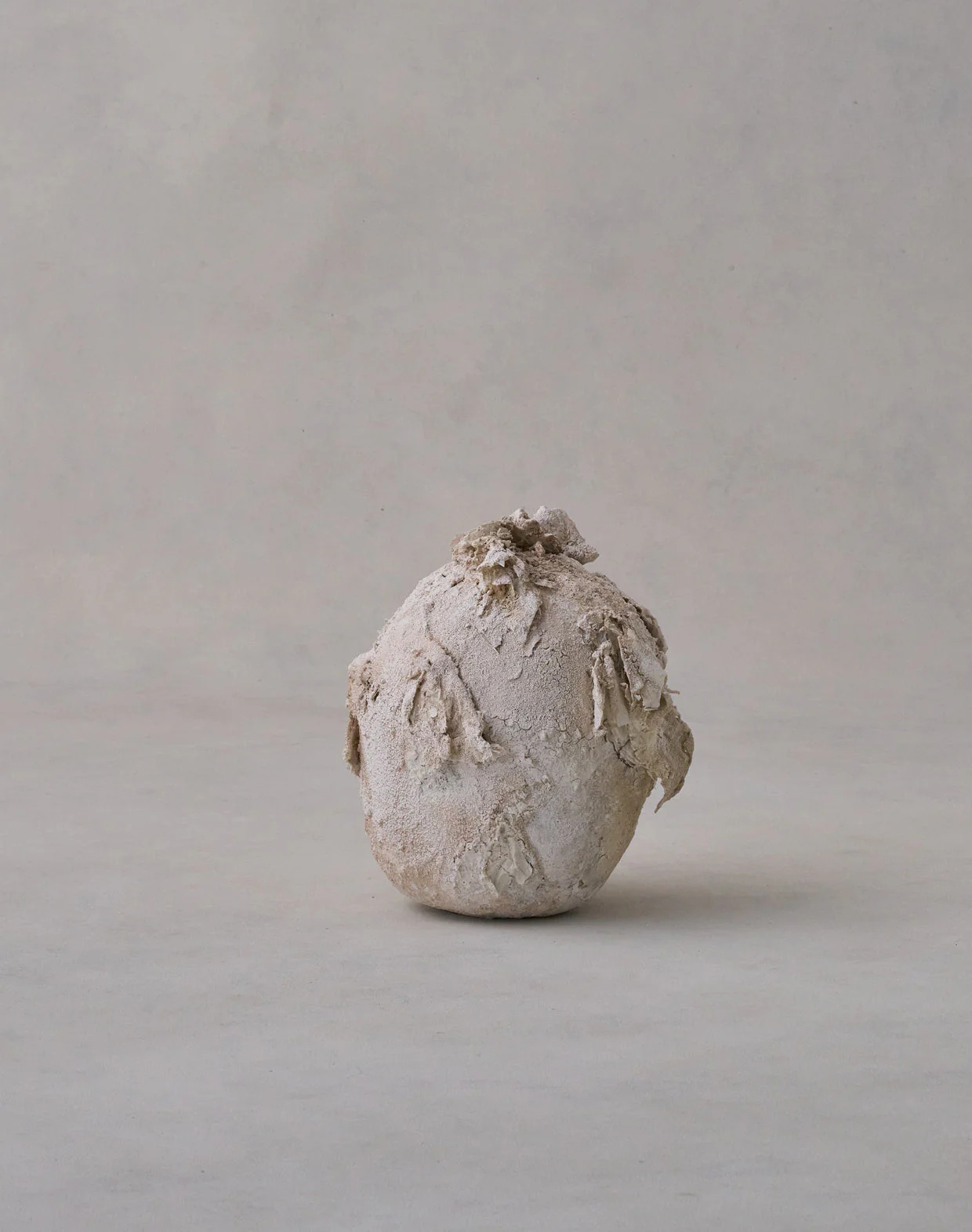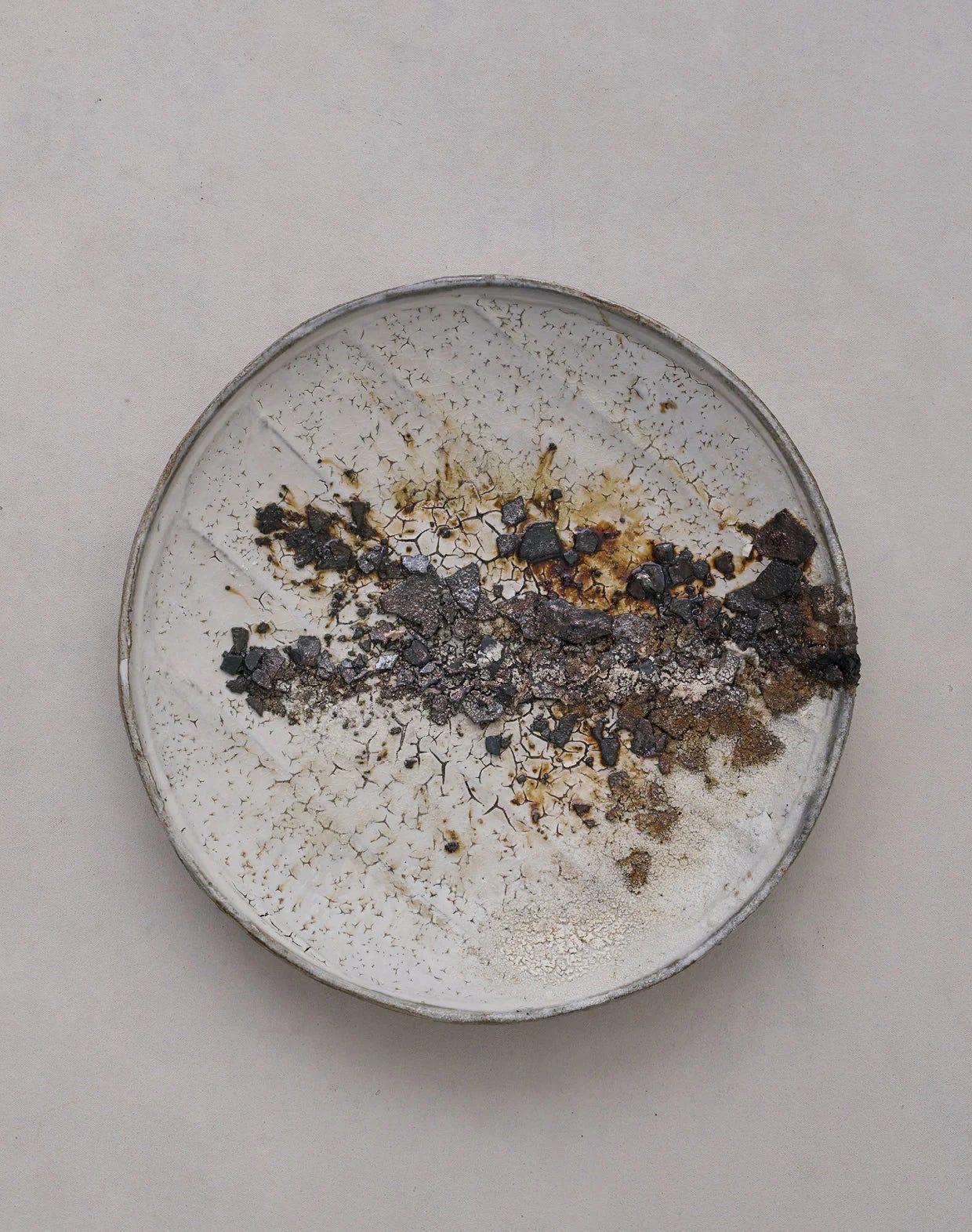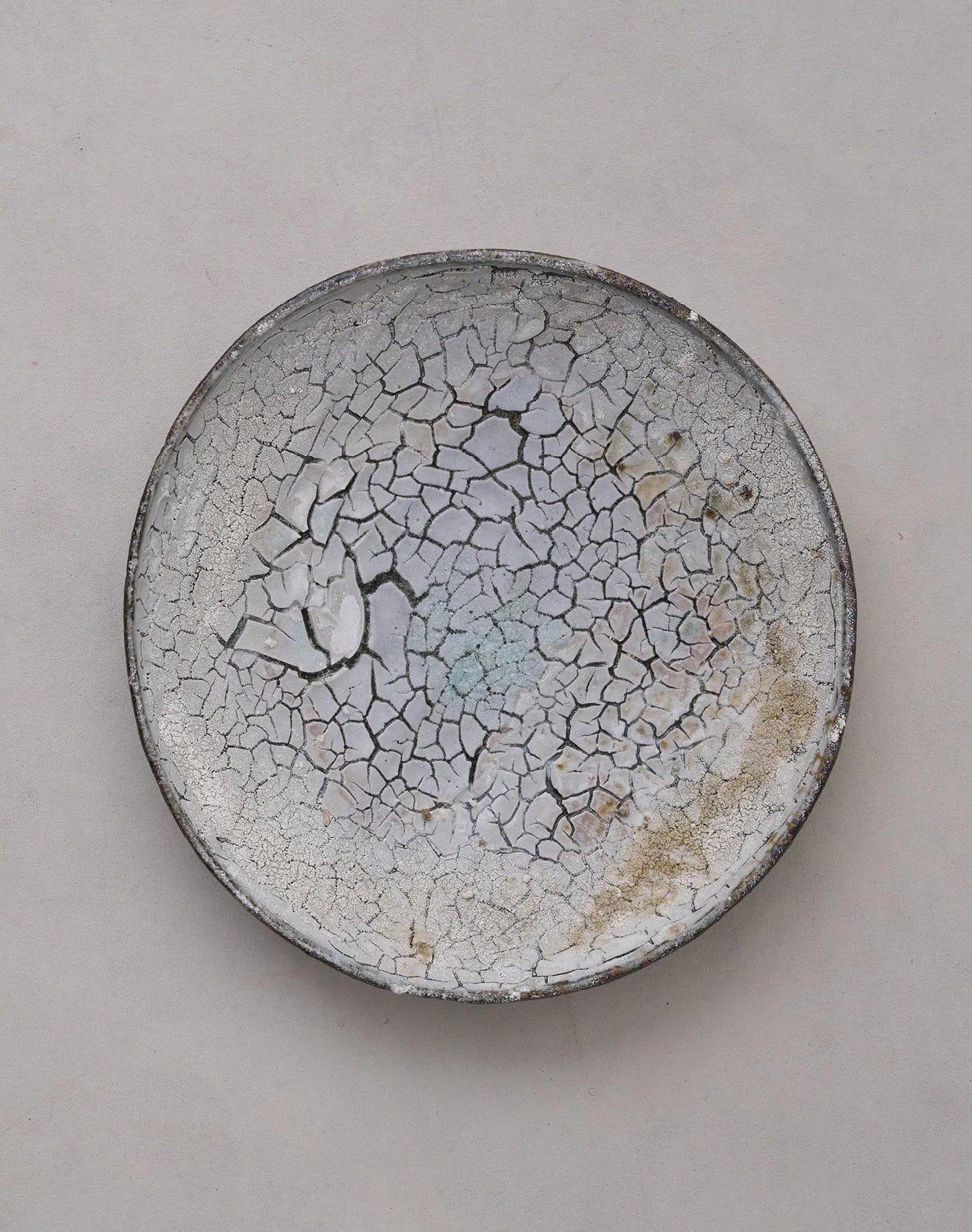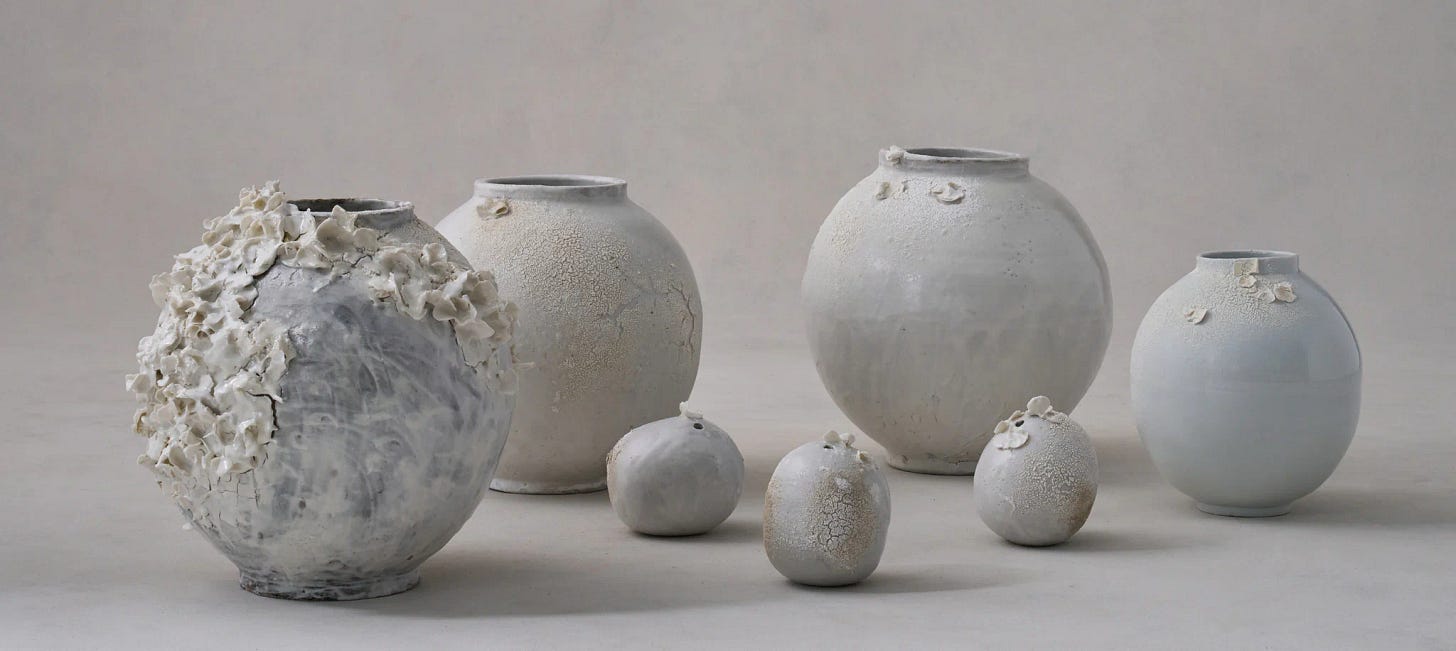Akiko Hirai: Immortality
You can take the girl out of Japan, but you cannot take Japan out of the girl. When visiting the new solo show of ceramicist Akiko Hirai at the Guild Gallery titled Akiko Hirai: Immortality, I was reminded of this widely understood concept that illustrates how a person’s upbringing and cultural background remain with them even if they leave that place behind. Hirai studied ceramics in London, has lived in London, and works in London, but despite this, her clay objects carry a strong Japanese identity.
I have been following her work since it was introduced in the first solo show at the Guild Gallery in 2021. Her sculptural vessels carry an intriguing expression of clay like no other: infusing the plain and traditional moon jar form—which serves as the base of all of her vessels—with expressive embellishments that come directly from nature. The moon jar represents purity and simplicity and the natural phases of the moon, with embellishments that capture the beauty of imperfection in nature according to the Japanese philosophy.
Hirai was born in Shizuoka, which rests on the coast of the Pacific Ocean. This Japanese region is known for its lush tea farms. Hirai studied cognitive psychology before moving to London, where she worked at a homeless shelter. She was 28 years old when she first got to experiment with clay while taking a class at a local ceramic studio. It was not only love at first sight for Hirai, but also a fundamental life changer. Her teacher, who immediately recognized her talent, helped her to apply to ceramic studies at the University of Westminster and from there, she went on to the prestigious program at Central Saint Martins. Hirai told me that from the very beginning, even as a student, it was her Japanese identity that was revealed and expressed in her work. Growing up in Japan, one is surrounded by the handmade, and it felt natural for her to embrace that heritage and to connect it to herself.
She has devised her own methods that remind me of the work of French Renaissance potter Bernard Palissy, who created plates and vessels with vegetations and small animals in relief, molded from casts taken of dead specimens. Hirai uses leaves, branches, flowers, and pieces of fabric which she covers with a few layers of slip before firing, adding new strands to the expressive vessels. Her basic shape is her moon jars, formed on the wheel of Raku clay. In her new work, she uses a cocoon as the base and clay powder which makes the vessels look as if they are covered with white snow, blurring the boundaries between art and design and making nature the main subject. The process itself is rather spontaneous, mimicking nature and strengthening the connection to nature. The exhibition is set in what has become the Gallery’s signature style of display. Each vessel is placed on a plywood box, bringing you into the world of Akiko Hirai. Minimalism in color is infused with richness of materiality, achieving a harmonious and quiet look.
The exhibition will extend through January 2nd. Photography by Zeph Colombatto.





